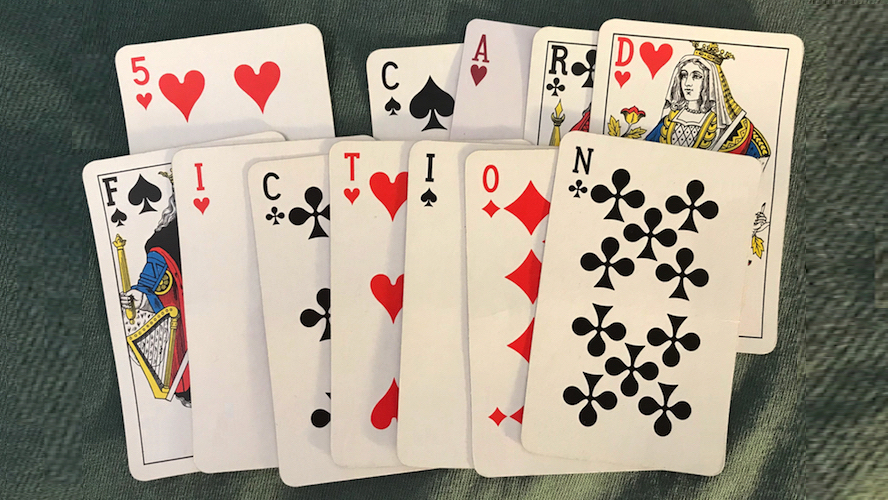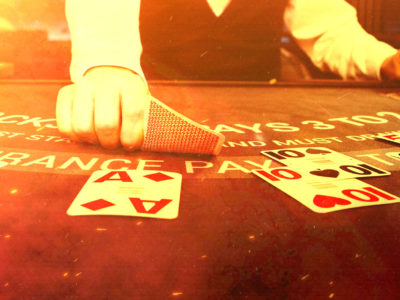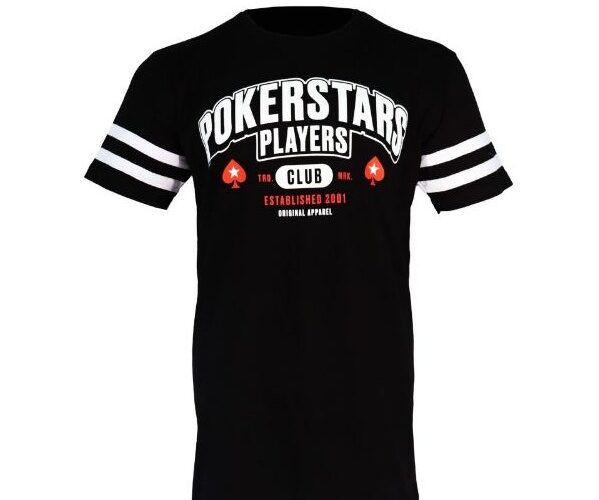When Kenny Rogers was about to record “The Gambler” in July 1978, his producer Larry Butler told him beforehand how he believed the song was going to be something special — more than just another country hit, but something much bigger.
“I got a funny feeling, that if you do this you will become the Gambler,” Butler is reported to have said.
As we well know, the song — the title track of Rogers’s album The Gambler released in December 1978 — was a huge success, topping the country chart, reaching the top 20 in the Billboard Hot 100, and winning Grammy awards for Rogers, Butler, and songwriter Don Schlitz. It also became poker’s unofficial “theme song,” in a way, with Rogers performing it at the 1979 World Series of Poker.
The song presents an encounter aboard a train between a young man and an older “gambler” with the latter sharing wisdom he’s accumulated over the years. The story is told from the young man’s perspective, but just as Butler predicted, Rogers would come to be identified with the title character.
That identification became even stronger — and was made literal — when in April 1980 a television movie “suggested by” the song aired on CBS with the title Kenny Rogers as The Gambler. A modest though entertaining throwback to the classical western, the film loosely adapts the song with an Old West tale mostly taking place aboard a train and involving interactions between an older gambler named Brady Hawkes (played by Rogers) and a young and eager up-and-comer named Billy Montana (Bruce Boxleitner).
Airing on Tuesday, April 8, 1980, Kenny Rogers as The Gambler was the highest-rated show on American television that week. According to the A.C. Nielsen Co.’s ratings, the two-hour movie was watched by 23.8 million viewers, meaning a little over 31 percent of American homes with televisions had tuned in. At the time there were only three major American television networks and only a small percentage of homes had cable TV. Even so — to compare apples and oranges — the big Game of Thrones season premiere a couple of weekends ago attracted 17.4 million viewers on the night it first aired.
In other words, the first Gambler movie was a mini-cultural phenomenon, riding the wave of a year-and-a-half of momentum already built up by the crossover country hit. It would eventually inspire four more TV movie sequels starring Rogers, furthering the fusion between the singer and the character.
If you’re gonna play the game, boy…
As you might imagine, poker does feature in Kenny Rogers as The Gambler, starting with Brady cleaning out young Billy in a game while teaching him the lesson not to cheat. “Poker’s a trade, son, and an honest one,” Brady tells Billy after having earlier caught him dealing seconds. “It’s fellas like you that give gambling a bad name, like drunk gives drinking.”
It’s not quite the same as advising someone if he’s “gonna play the game” he needs to “learn to play it right” (as in the song), but it’s the same idea.
Though prevalent, poker is somewhat incidental in Kenny Rogers as The Gambler, and doesn’t really relate to the primary plot concerning Brady’s effort to rescue his ex-wife and son from her new, abusive husband.
Almost all the games of five-card stud and five-card draw in the movie are all shown in non-specific ways, with hands fleeting past in a montage of showdowns. The one exception comes when Brady and Billy join a high-stakes game aboard the train with the wealthy Arthur Stobridge (Harold Gould) and a poker player named Doc Palmer (Lance LeGault) whom Stobridge backs.
Billy and Stobridge both bust out of the game, leaving Brady and Doc to play one big, climactic hand of five-card stud for what turns out to be all of the $20,000 on the table.
You’ve got to know when to…
In five-card stud players are initially dealt one card down and one card up. After an initial betting round three more cards are dealt face-up one at a time, with betting rounds after each.
After the deal, Doc is showing the A♦ and bets $500, and with the 10♥ up Brady calls. Brady calls another bet of $1,000 on the next round after Doc gets the A♣ to show a pair and Brady gets the 7♥ .
Doc still has the betting lead on the next round showing A♦ A♣ 5♣ and he bets $2,500. Brady then raises to $5,000 with his board of 10♥ 7♥ 9♥ .
“You know, even if you got what I’m afraid you got in the hole, you still got to catch another one to make it work,” Doc points out. “And I’m also afraid the odds are against you.”
“That’s why they call it gambling,” says Brady.
Indeed, if Brady has another heart in the hole, he has exactly a 1-in-5 chance of catching a fifth heart to make a flush (nine outs from 45 unknown cards). If Brady has a non-heart eight in the hole, he’s a little less likely to fill his open-ended straight draw (having eight outs).
And if Brady happens to have exactly the 8♥ as his down card — what Doc seems to be hinting at — the odds are still, indeed, against him, as he’s got 15 total outs for a 1-in-3 chance of improving to a straight or flush. Of course, if Doc ends up making a full house, only a straight flush (for which Brady would have just two outs) would work for Brady.
Doc just calls the raise, though, then draws another ace for his fifth and final card. With A♦ A♣ 5♣ A♠ showing Doc bets $2,500 again. Meanwhile Brady has drawn an interesting final card, the J♥ , making his board 10♥ 7♥ 9♥ J♥ , and he goes all in.
Doc is ready to fold, saying aloud his instinct tells him Brady has made a straight flush. But an irritated Stobridge forces Doc to call anyway, thinking for sure Brady is bluffing. A cool Brady shows he in fact did have the 8♥ in the hole, and he wins the pot. (Meanwhile, Doc’s hole card is never shown.)
Every gambler knows… the secret to survivin’
As noted, the scene contributes more to the film’s style than its plot, and has nothing much to do with the climax that follows between Brady and the villainous stepfather. It does, however, serve to characterize Brady — a.k.a. “The Gambler” — as a risk-taker, given the way he chases down Doc in the hand, raising “on the come” along the way.
And having the hero win a hand with a straight flush, well, that’s practically expected in a film paying homage to westerns of old.
Some might argue Rogers was gambling himself by taking on the role, having little prior acting experience before his starring turn. Talking to The Washington Post at the time, Rogers explained the decision in practical terms, looking at the launching of an acting career as a kind of insurance for the day when he was no longer recording smash hit singles.
“It’s possible that I’ll be an exception and last 40 years at the top,” said Rogers. “It’s more probable that I won’t — that in two years, my tenure at the top will be over. You have to deal with the reality.”
Another big factor mitigating the risk of taking the role — by then Rogers already was “the gambler” to many. It was like he was playing himself.
As the song teaches us, a good gambler knows when to walk away (and when to run). But for Rogers, this was a hand worth playing.
More “5-Card Fiction”
- Paul Newman surprisingly turns over four jacks in ‘The Sting’
- Three hands in ‘Rounders’ screenplay draft that didn’t make it to the screen
- Evoking Stu Ungar with a 10-high call on ‘Billions’
- Poker Solves a Murder in ‘The Canary Murder Case’
“5-Card Fiction” is an ongoing series examining fictional poker hands from film, television, and elsewhere. Have a favorite fictional poker hand you’d like to see discussed? Tweet your suggestions @PokerStarsBlog.
Back to TopView Other Blogs




















